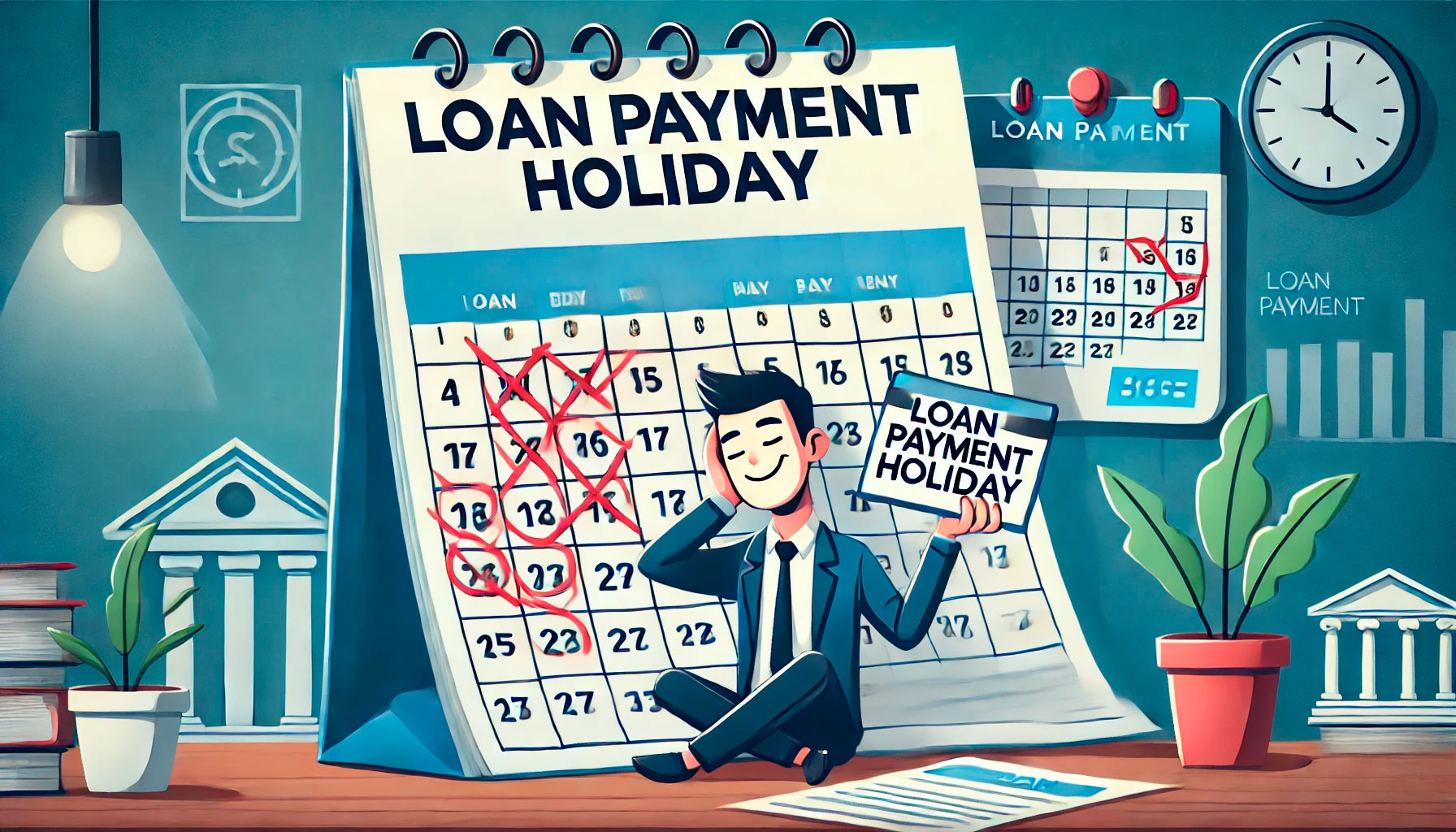
In an era where financial stability can feel as fleeting as a breeze, it’s no wonder that many individuals turn to loans as a way to manage their financial needs. From home mortgages to personal loans, borrowing money has become a part of daily life. However, what happens when the winds of life shift unexpectedly—when a sudden loss of income, an unforeseen emergency, or a challenging circumstance makes it difficult to keep up with monthly loan payments? One possible solution that has emerged in recent years is the loan payment holiday.
A loan payment holiday, as the name suggests, provides borrowers with a temporary break from their scheduled payments. During this period, the borrower is not required to make any payments toward their loan, usually for a set number of months. While this might sound like a welcome relief in a time of financial strain, like all financial decisions, it comes with its own set of advantages and disadvantages. Understanding both sides of the coin can help borrowers make an informed decision before signing up for a loan payment holiday.
Understanding Loan Payment Holidays
A loan payment holiday is essentially a pause in the loan repayment schedule, offered by many financial institutions to borrowers who are facing financial difficulties. It’s important to note that while borrowers do not make payments during the holiday period, the interest on the loan continues to accumulate. This means that, while immediate relief is provided, the overall loan balance may increase, leading to higher payments in the future.
Loan payment holidays can vary in length depending on the lender and the type of loan. Typically, these holidays last anywhere from one to six months, and can be applied to various types of loans, including mortgages, personal loans, and car loans. Some lenders even allow borrowers to select the timing of their payment holiday, providing greater flexibility. While the idea of taking a break from loan payments may seem like a financial vacation, it is vital to weigh both the advantages and disadvantages of such an arrangement before making a decision.
The Advantages of Loan Payment Holidays for Borrowers
For many borrowers, the biggest draw of a loan payment holiday is the immediate relief it offers. When faced with unexpected financial stress, such as job loss or medical expenses, a break from payments can provide much-needed breathing room. This allows borrowers to focus on their immediate needs—whether it’s finding a new job, recovering from an illness, or addressing an emergency—without the added stress of worrying about loan payments.
Moreover, a loan payment holiday can help borrowers avoid late payment penalties and negative impacts on their credit scores. If a borrower is unable to make their regular payments, they may face fines or penalties, and their credit score may suffer. A loan payment holiday can prevent this from happening by officially pausing the repayment schedule. This can be a relief for those who are struggling to make ends meet but still want to protect their financial reputation in the long term.
Another advantage of loan payment holidays is the flexibility they offer. Lenders typically allow borrowers to choose when they want to begin their payment holiday, which can help borrowers better manage their cash flow during periods of financial uncertainty. Some borrowers may find that taking a holiday during a specific season—such as after the holiday shopping rush or during a slow period at work—works better for their budget.
Finally, loan payment holidays can offer borrowers the opportunity to catch up on their finances. For those who are dealing with multiple financial obligations, taking a break from one loan payment can give them the time they need to restructure their budget, build up savings, or take care of other pressing financial concerns. It can also help borrowers avoid falling into a debt spiral, where missed payments lead to more missed payments, eventually leading to more serious financial trouble.

The Disadvantages of Loan Payment Holidays for Borrowers
Despite the initial appeal of a loan payment holiday, it is important to carefully consider the potential drawbacks before agreeing to such an arrangement. One of the most significant disadvantages is the impact on the total cost of the loan. While borrowers are not required to make payments during the holiday period, the interest on the loan continues to accrue. This means that once the holiday ends, the borrower may face higher monthly payments to make up for the missed payments.
In some cases, the interest accrued during the holiday period can significantly increase the overall balance of the loan, causing the borrower to pay more in the long run. For example, if a borrower takes a three-month payment holiday, they may be required to pay back not only the amount they skipped but also the additional interest that has accumulated during the break. As a result, a loan payment holiday can end up costing more than simply continuing with regular payments.
Another downside of loan payment holidays is that they may not be available to all borrowers. While many lenders offer this option, it is not universally available. Some borrowers may find that they do not qualify for a payment holiday, either due to the type of loan they have or because they do not meet the lender’s criteria. In these cases, the borrower may be forced to explore other options, such as negotiating a temporary payment reduction or seeking financial assistance from other sources.
Furthermore, taking a loan payment holiday can sometimes lead to a false sense of security. While the borrower may feel relieved during the holiday period, the underlying issue—the need for a steady source of income or better financial management—remains unresolved. A payment holiday may only delay the inevitable, especially if the borrower has not taken steps to address their financial difficulties. In such cases, the borrower may find themselves in the same position after the holiday ends, only with a higher loan balance to deal with.
Making the Right Decision: Is a Loan Payment Holiday Right for You?
Ultimately, the decision to take a loan payment holiday depends on the borrower’s specific financial situation. For those facing a temporary setback, such as a brief period of unemployment or a one-time emergency, a payment holiday may offer the breathing room they need to get back on their feet. However, it is essential to weigh the potential costs carefully and consider whether the loan payment holiday will provide a long-term solution or merely delay the financial issues at hand.
Before committing to a loan payment holiday, borrowers should assess their current financial situation, explore alternative options, and consult with their lender to fully understand the terms and conditions of the payment holiday. If necessary, seeking advice from a financial advisor can help borrowers make an informed choice that aligns with their long-term financial goals.
In conclusion, the advantages and disadvantages of loan payment holidays for borrowers present a nuanced decision that requires careful thought and consideration. While they offer short-term relief and prevent immediate financial fallout, they come with the potential for increased loan costs and a delay in addressing underlying financial challenges. By approaching the decision with a clear understanding of both the pros and cons, borrowers can determine whether a loan payment holiday is the best course of action for their unique circumstances.






